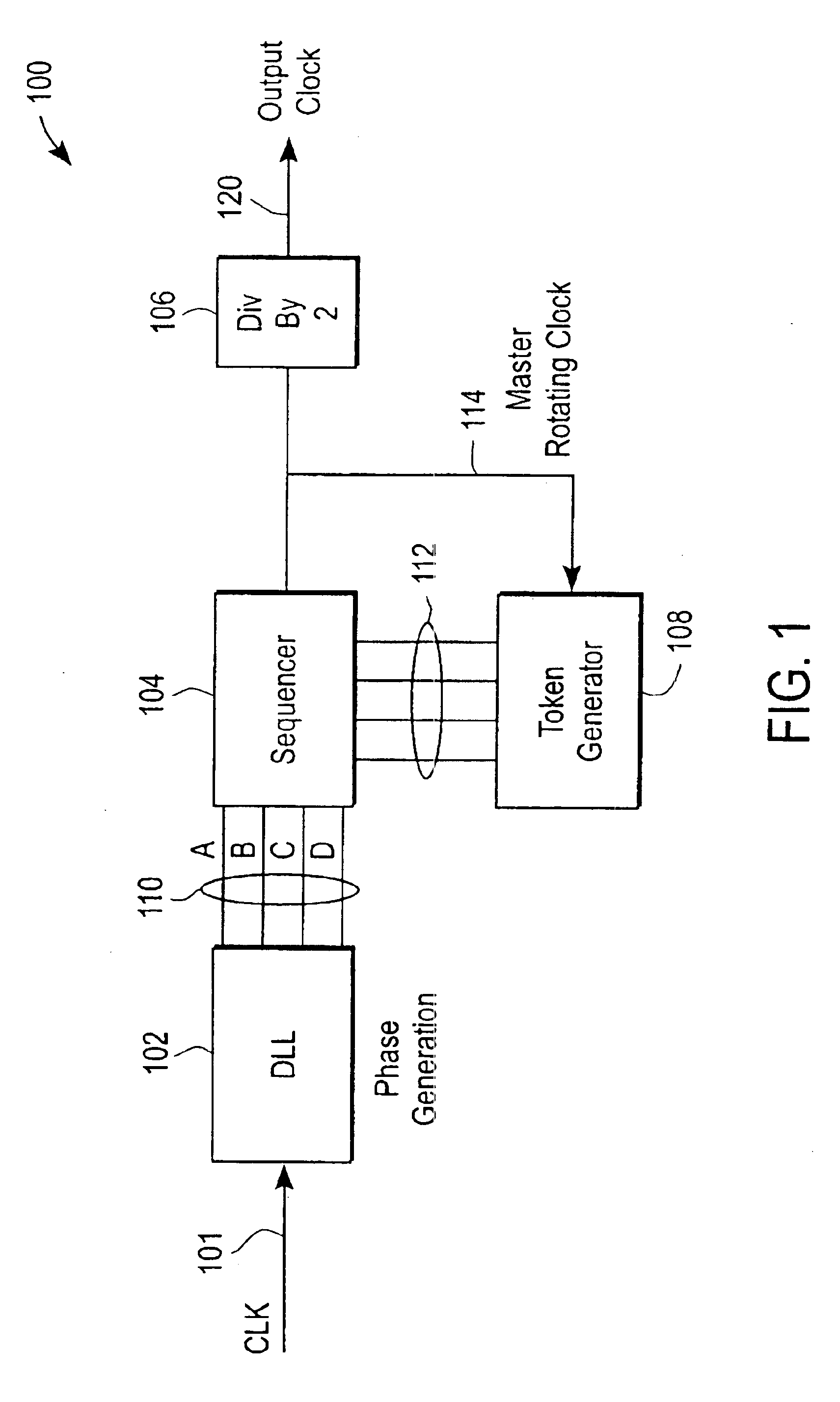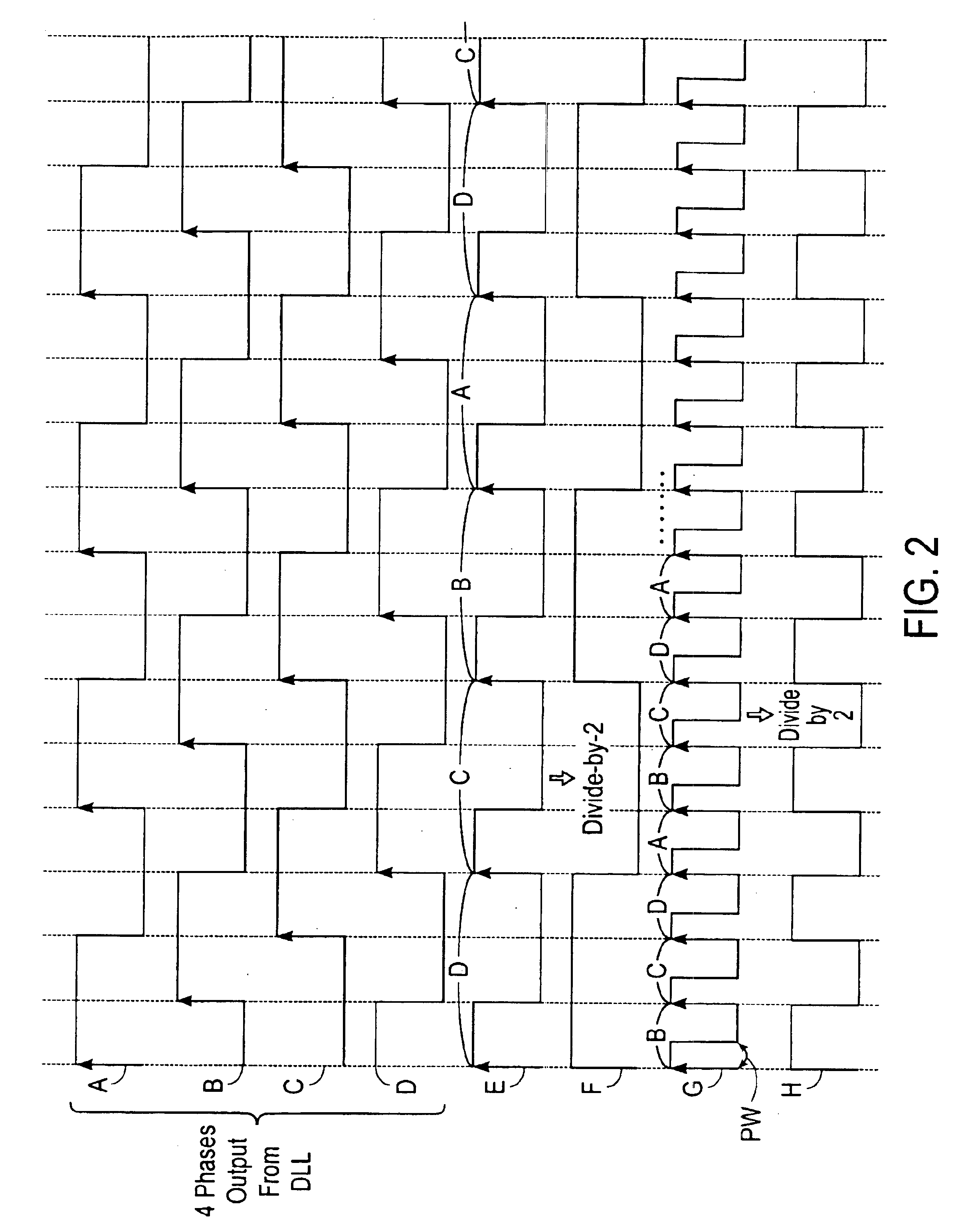Universal clock generator using delay lock loop
- Summary
- Abstract
- Description
- Claims
- Application Information
AI Technical Summary
Benefits of technology
Problems solved by technology
Method used
Image
Examples
Embodiment Construction
Referring now to the block diagram of FIG. 1, the universal clock generator 100 is capable of generating clock signals of a variety of frequencies with 50% duty cycles, comprises a Delay Lock Loop phase (DLL) 102, a sequencer 104, a divide-by-2 circuit 106, and a token generator 108.
The DLL 102 receives an incoming clock signal 101, locks to the incoming clock 101, and generates a plurality of delayed clock signals 110 based on the incoming clock signal 101. The delayed clock signals 110 have the same frequency as that of the incoming clock signal 101, but are delayed by different delay phases (A, B, C, D). These multiple phases (A, B, C, and D) have finite delays. For example, the delayed clock signals 110 may include 4 delayed clock signals (A, B, C, and D) that are each delayed by different phases, such as different integer multiples of 90 degrees. Although FIG. 1 shows four delayed clock signals 110 output from the DLL 102, it should be noted that any number of delayed clock sig...
PUM
 Login to View More
Login to View More Abstract
Description
Claims
Application Information
 Login to View More
Login to View More - R&D
- Intellectual Property
- Life Sciences
- Materials
- Tech Scout
- Unparalleled Data Quality
- Higher Quality Content
- 60% Fewer Hallucinations
Browse by: Latest US Patents, China's latest patents, Technical Efficacy Thesaurus, Application Domain, Technology Topic, Popular Technical Reports.
© 2025 PatSnap. All rights reserved.Legal|Privacy policy|Modern Slavery Act Transparency Statement|Sitemap|About US| Contact US: help@patsnap.com



